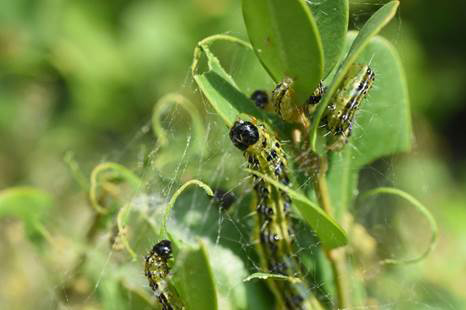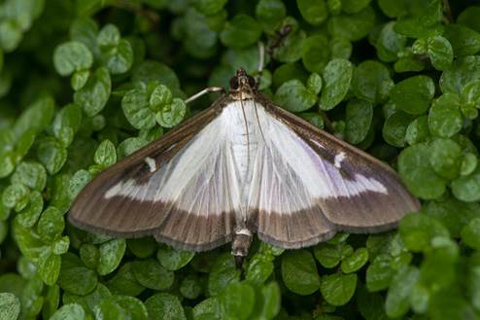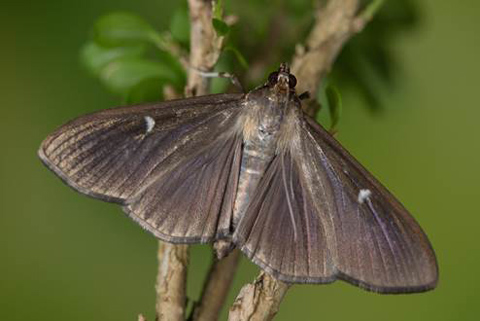Invasive box tree moths found in WNY

On August 18, the New York State Department of Agriculture and Markets (AGM) confirmed the detection of box tree moth in parts of Western New York, near the Canadian border in Niagara County. Box tree moth is an invasive pest from East Asia that poses a major threat to the boxwood plant, an ornamental shrub that is a valuable part of the U.S. nursery industry, with an annual economic impact estimated at $141 million. AGM is urging residents and the horticultural industry to spot and report the box tree moth to the department through its reporting tool at: https://arcg.is/1Df8Se.
State Agriculture Commissioner Richard A. Ball said, “The box tree moth is a highly destructive pest that is a threat to the health of our boxwood plants. We are asking residents to help aid in our efforts to find the box tree moth so that we can better assess impacted areas and reduce its spread in New York State.”
Box tree moth larvae are easily recognizable; they are green and yellow with white, yellow, and black stripes and black spots. Signs of damage may not appear at the beginning of an infestation because young larvae hide among twigs and leaves. Signs of a box tree moth feeding on a plant include chewed, cut, or missing leaves, yellowing or brown leaves, white webbing, and green-black excrement on or around the plant. Larvae skeletonize the leaves and feed on the bark, causing defoliation and dryness, eventually leading to the plant’s death.
Adult box tree moths generally have white bodies with a brown head and abdomen. Their wings are white and slightly iridescent, with an irregular thick brown border. Some adults have completely brown wings with a small white streak on each forewing. Males and females can show both colorations.
AGM and United States Department of Agriculture (USDA) are continuing to survey for box tree moth and are urging residents and the horticultural industry to look for and report any signs of infestation. Residents can help by following these steps:
•Check any boxwood plants you have for signs of box tree moth life stages.
•If you find any signs of infestation, take a picture, and report it to https://arcg.is/1Df8Se.
•Please cooperate with agriculture officials if asked for permission to access your property for visual inspection of boxwood plants or for placement of a box tree moth trap.
Allen Proxmire, National Policy Manager in USDA’s Animal and Plant Health Inspection Service said, “We need the public’s help to eradicate this pest. If you find signs of infestation in your boxwoods, please take pictures and include them in your report.” Proxmire recommended that residents contact their county Cornell Cooperative Extension service for information about pesticides available to consumers to kill the insects. He also said the most environmentally safe precaution for infested plant material disposal is to bag it, safeguard it on site, and contact AGM for additional instructions. Residents can find treatment information at https://ir4.rutgers.edu/EHC/InvasiveSpecies/BTM_FactSheet_PotentialMitigationOptions_20210527.pdf.
Provided information and photos






